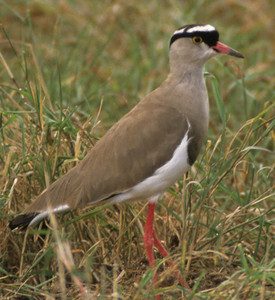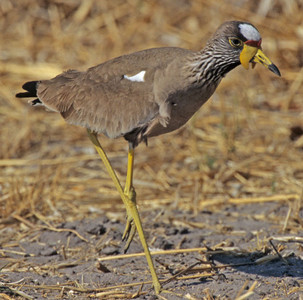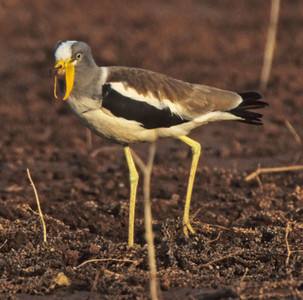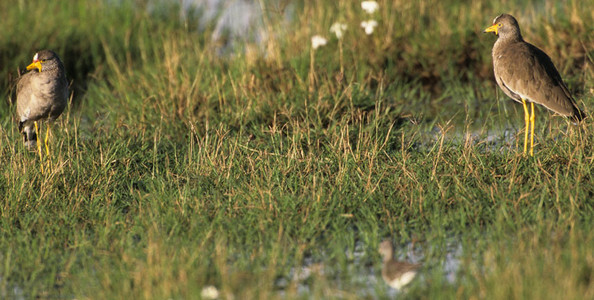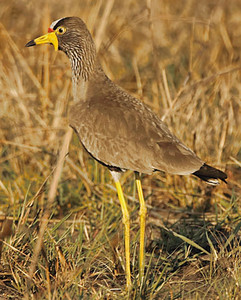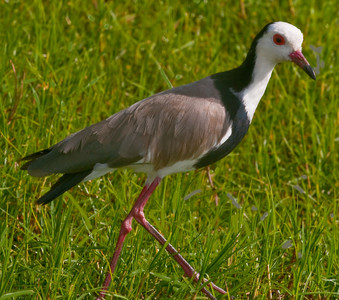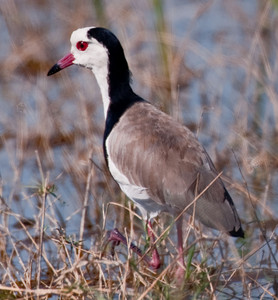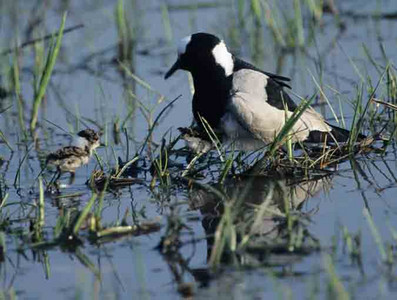
Blacksmith Plover (F) with Chicks-1st image
1st Image: A Blacksmith Plover (F) with her chicks scurrying to hide under her wing. One is almost hidden--only its rear half is exposed--and one is still about six inches away. These chicks are only about 2 days old. [Khwai, Botswana].
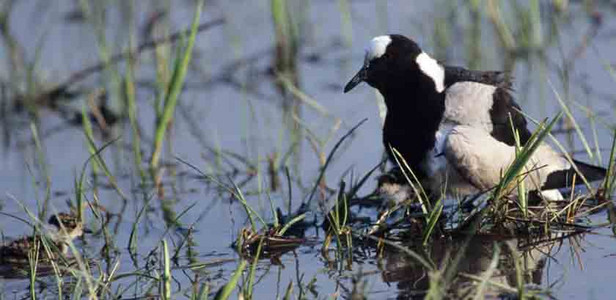
Blacksmith Plover (F) with Chicks-2nd image
2nd image: Blacksmith Plover (F) with her 2-day-old chicks. A chick's beak can be seen protruding from beneath its mother's L wing (black-pointed object), a second chick--except for its rear end--is nestling under her R wing, and the third hurries to join them. (Please see previous image). [Khwai, Botswana].

Blacksmith Plover Chicks-Three 2-day olds-3rd Image
Blacksmith Plover Chicks-3rd Image: Three 2-day olds: They had already buried themselves under their mother's feathers, when she suddenly, with one stroke of her wings, lifted herself off the water and flew across the pond to join her mate. The bewildered chicks suddenly found themselves completely exposed. But what a wonderful, rare photo-op of such very young chicks! [Khwai, Botswana].
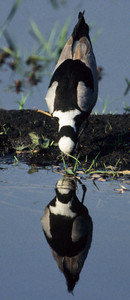
Blacksmith Plover (M)-4th Image
4th image: The father of the 3 Blacksmith Plover chicks makes a beautiful reflection as he bends over the water. [Khwai, Botswana].
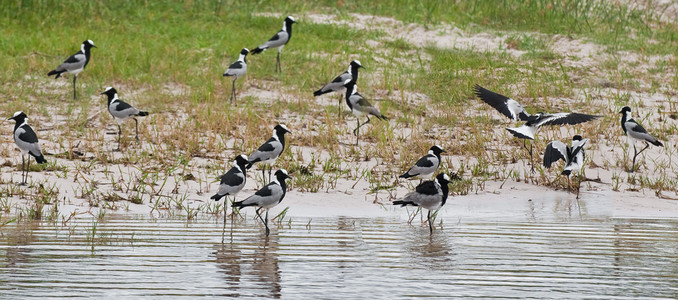
Blacksmith Plovers
A group of Blacksmith Plovers at the water's edge. Some are wading.The bird gets its name from the 'klink, klink, klink' sound it makes that sounds like a blacksmith's hammer. The fact that the dozen are here together suggests that they are not in a breeding phase, like the pair with three chicks in the first four images.
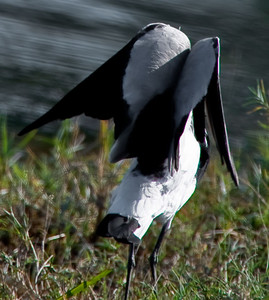
Blacksmith Plover
The mother of the 10-day-old chick in the following image stretching her wings. [Botswana].
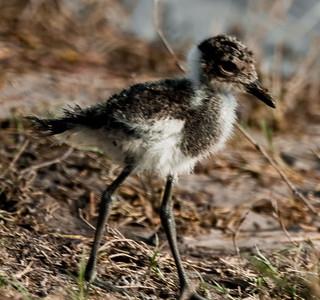
Blacksmith Plover
A 10-day-old Blacksmith Plover chick already exploring its surroundings. It's astounding how much it has grown in eight days when compared to those other very young chicks depicted in the first three examples. This chick will not fledge for about another 30 days. [Botswana].
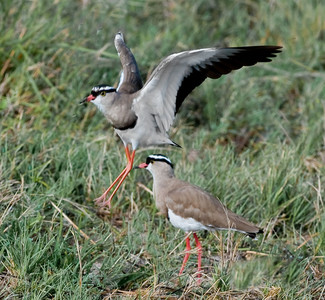
Crowned Plover (Female)
A Crowned Plover female flying in to be with her subadult chick, which still has its yellowish-brown body feathers. [Botswana].
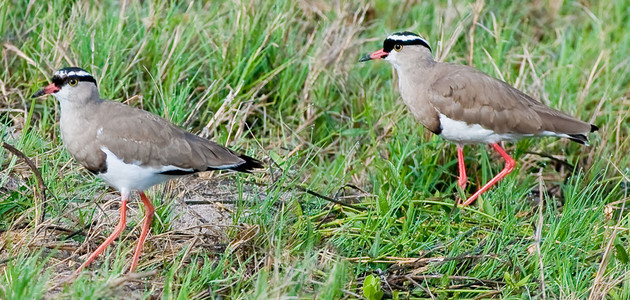
Crowned Plover
Two Crowned Plovers in the short, dry grass. The one in the back may be younger. They feed on insects. [Botswana].
